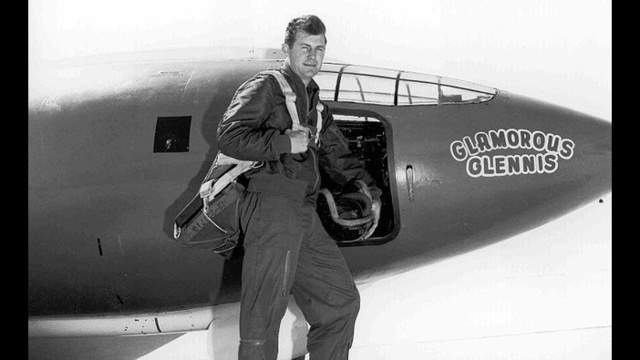Chuck Yeager Dead At 97
Legendary test pilot and World War II fighter ace Gen. Charles E. Yeager died Monday night, according to a tweet released by his wife Victoria. He was 97. “It is…

Legendary test pilot and World War II fighter ace Gen. Charles E. Yeager died Monday night, according to a tweet released by his wife Victoria. He was 97. “It is w/ profound sorrow, I must tell you that my life love General Chuck Yeager passed just before 9pm ET. An incredible life well lived, America’s greatest Pilot, & a legacy of strength, adventure, & patriotism will be remembered forever,” Mrs. Yaeger said in a tweet Monday evening just after her husband’s death.
Born in the small town of Myra, West Virginia, in 1923, he later lived in nearby Hamlin. After graduating from high school in 1941, Yeager joined the U.S. Army Air Corps and after initial training as a maintenance specialist, he was accepted for pilot training. Training in California, Yeager flew the P-39 Airacobra and later transitioned to the P-51 Mustang. He joined a P-51 squadron in England after having been stationed there in November 1943. After scoring one victory, he was shot down over France in March 1944, but escaped through Spain to return to England. Although so-called evadees were prohibited from further combat flying, Yeager pleaded his case to Gen. Dwight Eisenhower who approved his return to combat. Yaeger flew more P-51 missions just after D-day, eventually downing 13 German aircraft, including five in a single day in October 1944.
After World War II, thanks to his high number of flight hours and mechanical background, Yeager was assigned to what was then the test and evaluation command at Wright Patterson field. That posting led him to become the project pilot on the X-1 program, the first rocket-powered research aircraft specifically designed by Bell Aircraft to reach and exceed Mach 1. In an achievement that later made him a household name, Yeager flew the X-1 to Mach 1.05 on Oct. 14, 1947. He was awarded the Collier Trophy in 1948 for his flight, along with Larry Bell and John Stack of NACA.
Yeager continued his work in flight test, flying a succession of high-performance, high-altitude research aircraft. In 1962, he became the first commandant of the USAF Aerospace Research Pilot School at Edwards Air Force Base. He also commanded several fighter squadrons, including a B-57 group with combat service in Vietnam and after promotion to brigadier general in 1969, he was vice-commander of the 17th Air Force. He retired in 1975. After retirement, he was active in general aviation and was a frequent visitor to AirVenture at Oshkosh.
The cause of death was not reported by the family. AVweb will update the story as more information becomes available.






